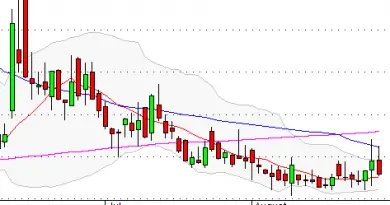What is Implied Volatility in Option Trading?
Marketwatch outlined an option volatility trading strategy developed by a former market maker,
"The Black-Scholes model used in options pricing exhibits a log normal distribution, a consequence of the fact that prices cannot go below zero. This distribution presently exhibits a fat tail to the downside, Harwood said.
“That’s kind of how selling options works; you’re going to make money, but when you lose, you will lose more than you make.”
The thought in Harwood's mind was how to create a scenario that takes the skewed distribution and applies technicals so he could say the stock is more likely to go up than down, he said.
The market is built for crashes, Harwood said." Read more...
Option Volatility Trading makes use of the thought of volatility as applied to the stock market. During a particular time, this kind of trading mainly focuses on the magnitude of the distance the stock prices travel. There are times when short-term volatility is low. This happens when the stock prices remain in approximately the same range for a long time.
On the contrary, there are times when the stock prices rapidly move at various price ranges. Getting stock prices' Historical Volatility is the key step. It can be obtained by getting the realized value volatility of a financial instrument on a certain time and evaluating it to the average stock prices. The higher the difference among the two, the bigger the opportunity will be.
Option volatility trading allows you remember whether the option contract being offered to you is under-priced or over-priced. To do this, one needs to look at the Implied Volatility (IV) of the option stock value. It would be best to keep away from when you have analyzed and observed that the options price in the contract is expensive and is over-priced. You must be cautious of option trading strategies such as spreads that have 'sell to open' positions schemes. On the other hand, it is a good opportunity for you to make investments when you notice that the options contract is under-priced or is at a discounted level than the standard price. The contract has low Implied Volatility.
With option volatility trading, both Implied Volatility and Historical Volatility must be accounted. Historical Volatility is the average movement of the stock value at a certain time frame which was defined earlier. As an example you're analyzing at the money (ATM), out of the money (OTM) and in the money (ITM) prices of a certain stock. You have observed that evaluating the prices that the OTM option prices are higher than those of the ATM prices. What do you think is the better alternative? In this case, it is better to buy than to take out a Bull Call Spread or to open the ATM options.

